#Botpress development
Explore tagged Tumblr posts
Text
Botpress vs Dialogflow: Which AI Chatbot Platform Is Better in 2025?
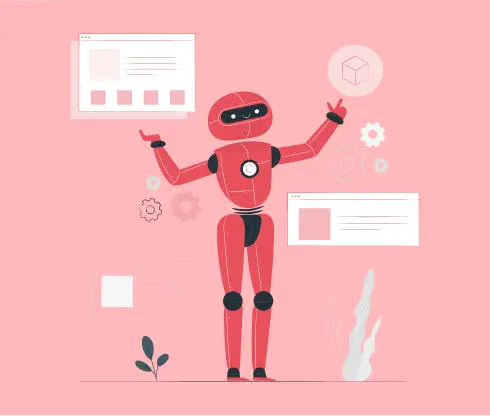
This blog compares Botpress and Dialogflow to determine which AI chatbot platform is better in 2025. It explores features, flexibility, and why Botpress AI chatbot development stands out for custom automation and scalability.
0 notes
Text
Botpress Chat Botbot Development Company - Sparkout Tech Solutions Inc.

Build Smarter Conversations with Sparkout’s Botpress Chatbot Development Services At Sparkout Tech Solutions, we specialize in building custom AI-powered chatbots using Botpress — helping businesses deliver fast, scalable, and intelligent conversations across platforms like WhatsApp, Slack, and web. From design to deployment, we ensure secure, multilingual, and highly interactive chatbot experiences tailored to your business needs.
1 note
·
View note
Text
The Future of AI Chatbots: Why Botpress Is a Platform to Watch

Botpress stands out as a next-gen platform for AI chatbots, offering modular, open‑source architecture and seamless integration capabilities. Its sophisticated NLU, analytics, and extensible framework make it a future-ready choice for intelligent bot development.
0 notes
Text
Top 10 AI Agent Development Company Specializing in Custom Business Applications

As AI adoption accelerates across industries, enterprises are increasingly turning to intelligent agents to solve unique business challenges. From workflow automation to personalized customer support, custom AI agents are driving efficiency and innovation.
At the forefront of this transformation is Globalnodes, a trusted AI agent development company that excels in building custom, scalable, and domain-specific AI solutions. In this microblog, we spotlight 10 companies leading the charge in developing tailored AI agents designed for real-world business applications.
1. Globalnodes
Globalnodes stands out for its deep focus on custom AI agent development—built specifically around enterprise needs, legacy systems, and domain complexities. Whether it's creating autonomous agents for operations, sales, HR, or customer service, Globalnodes delivers end-to-end solutions that are flexible, secure, and scalable.
Their key capabilities include:
Bespoke AI agents trained on enterprise data
Domain-specific NLP models and prompt engineering
Seamless integration with CRMs, ERPs, and internal APIs
Long-term AI orchestration and agent management
2. Kore.ai
Kore.ai enables businesses to build custom digital and voice agents with deep contextual awareness. Its no-code platform is ideal for crafting agents tailored to industry-specific workflows in finance, retail, and healthcare.
3. Yellow.ai
Yellow.ai offers dynamic AI agents that adapt to business context and user behavior. Their strength lies in multilingual capabilities and integrations, making them a top choice for global customer-facing applications.
4. Cognigy
Focused on contact center transformation, Cognigy delivers enterprise-grade AI agents with low latency and high adaptability. Their platform is designed for real-time customizations across voice and chat.
5. Wysa
While known for mental health AI, Wysa has expanded to offer customizable AI coaching agents used in HR and employee engagement contexts. Their emotionally intelligent bots are fine-tuned for human-like interactions.
6. Botpress
An open-source platform ideal for developers looking to build fully customizable AI agents. Botpress supports deep NLP customization and offers complete control over behavior, workflows, and UI.
7. Teneo (by Artificial Solutions)
Teneo enables large enterprises to create sophisticated, multi-channel AI agents with tailored dialogue flows. It’s especially effective for organizations needing deep conversational logic and localization.
8. Boost.ai
Boost.ai offers scalable AI agents with a strong focus on self-learning and business context understanding. Their agents are frequently deployed in banking, insurance, and the public sector.
9. Aisera
Aisera specializes in AI agents for IT, customer service, and employee support. Their agents are pre-trained on enterprise use cases but can be tailored to match specific workflows and systems.
10. Haptik
Haptik develops AI agents for customer engagement across messaging platforms, apps, and websites. Their strength lies in domain-trained agents optimized for telecom, e-commerce, and BFSI.
Conclusion
Choosing an AI agent development company that understands your business is no longer optional—it’s essential. Generic bots can’t solve specific operational challenges, but custom business applications powered by AI agents can.
With a strong track record in delivering intelligent, enterprise-ready solutions, Globalnodes leads the way in building custom AI agents that unlock tangible value and drive automation at scale. Whether you're starting with a prototype or scaling an enterprise-wide deployment, Globalnodes offers the strategic edge your business needs.
0 notes
Text
Best AI Tool to Create AI Characters: Explore the Future of Interactive Personalities

In the age of artificial intelligence, creating lifelike digital characters is no longer just for tech giants or game developers. With the rise of advanced AI tools, anyone—from storytellers and gamers to developers and marketers—can now create AI-powered characters that can converse, adapt, and even entertain. But among the many tools available, which is the best AI tool to create AI characters?
Let’s dive into the top choices and explore why Janitor AI is creating a buzz in the AI community.
What Are AI Characters?
AI characters are digital personas created using artificial intelligence algorithms. They can:
Chat naturally like humans using natural language processing (NLP)
Adapt to user input and learn from conversations
Embody personalities based on user-defined parameters
Perform roles in games, simulations, marketing, or entertainment
These characters are used across industries—from gaming and education to virtual assistants and storytelling.
Best AI Tools to Create AI Characters
1. Janitor AI
Janitor AI is gaining rapid popularity as one of the most flexible platforms for creating custom AI characters. It allows users to design virtual personas with distinct personalities, interests, and conversational tones.
Key Features of Janitor AI:
Highly customizable character creation
Intuitive dashboard for setting behavior and tone
Integration with powerful language models (like GPT)
Option to create NSFW or safe-for-work bots based on user preferences
Frequently used in roleplay communities and interactive fiction
Janitor AI shines when it comes to user-generated roleplay characters and personal companion bots, giving users control over how their AI behaves and responds.
2. Character.AI
Character.AI is another major player that allows users to interact with AI personalities and even create their own. With a large community and simple creation tools, it’s perfect for storytelling and interactive experiences.
3. Replika
Replika is a well-known AI companion app, focused more on emotional support and friendship. While it may not offer deep character customizability like Janitor AI, it excels in forming relationships and learning user preferences over time.
4. Inworld AI
Inworld AI is built with game developers in mind. It helps create intelligent NPCs (non-playable characters) that can be integrated into game engines like Unity and Unreal. It's ideal for immersive gaming experiences.
5. Botpress & Rasa
For developers wanting more control over logic and integration, open-source tools like Botpress and Rasa offer the backbone for building sophisticated AI characters and chatbots with complete customization.
Why Janitor AI Stands Out
Janitor AI combines simplicity with depth—a rare trait among AI character platforms. Whether you're a casual user creating a fun digital friend, or a writer looking to simulate complex dialogue, Janitor AI offers:
Ease of use: No coding required
Community support: Explore characters created by others
Freedom of expression: From wholesome chats to edgy roleplays
If you're new to AI characters or seeking a highly customizable tool that lets you build personalities from scratch, Janitor AI is an excellent starting point.
Final Thoughts
AI characters are transforming how we interact with technology. From gaming and storytelling to virtual friendships and brand experiences, the tools available today make it easier than ever to build digital personas that feel real.
While there are several platforms out there, Janitor AI continues to attract attention for its balance of user-friendliness, flexibility, and creative freedom. If you're looking for the best AI tool to create AI characters, it's definitely worth exploring.
Read More
52013l4 Meaning: Decoding Its Hidden Message and Cultural Significance
CroxyProxy YouTube: Stream Blocked Videos Freely and Securel
0 notes
Text
How Botpress Is Used by Leading AI Agent Development Companies

Botpress is a powerful platform that enables AI agent development companies to create customizable, scalable intelligent agents. Leading AI agent development companies leverage its capabilities to build advanced, highly efficient conversational solutions for businesses.
0 notes
Text
Getting Started with Botpress in Your AI Company

Botpress enables a botpress ai development company to rapidly develop intelligent, scalable AI agents with its modular design and LLM-agnostic flexibility. From setting up to deploying, it makes every conversational AI development step a breeze for both enterprise and startups.
1 note
·
View note
Text
TypeScript Development Services: Elevate Your Web Development Projects
In the fast-paced world of software development, TypeScript has emerged as a game-changer, offering robust features that simplify coding, improve code quality, and enhance collaboration. Whether you’re developing large-scale enterprise applications or dynamic web interfaces, TypeScript Development Services provide the tools and expertise needed to succeed.

What is TypeScript?
TypeScript is a strongly typed programming language developed by Microsoft, built on JavaScript. It offers features like static typing, enhanced code completion, and better tooling support, making it the preferred choice for developers aiming for scalability and maintainability in their projects.
Benefits of TypeScript Development Services
Enhanced Code Quality: With static typing, developers can identify errors at compile time, reducing bugs and runtime errors.
Improved Collaboration: TypeScript’s clear and structured syntax enhances team collaboration, especially on large projects.
Seamless Integration: TypeScript integrates seamlessly with popular frameworks and libraries, including Angular, React, and Node.js.
Future-Ready Solutions: Its compatibility with JavaScript ensures future-proof applications that are easy to maintain and upgrade.
Why Choose TypeScript for Your Next Project?
If you’re looking to build scalable, maintainable, and high-performance applications, TypeScript is a top choice. From startups to established enterprises, businesses worldwide leverage TypeScript to accelerate their development cycles and deliver reliable software solutions.
Complementary Development Services
To maximize the potential of your projects, consider combining TypeScript development with specialized development services. Here’s how:
Hire Dedicated MEAN Stack Developers
The MEAN stack—MongoDB, Express.js, Angular, and Node.js—is a powerful framework for building dynamic web applications. By hire dedicated MEAN stack developers, you can:
Leverage expertise in full-stack development.
Ensure seamless integration of TypeScript with Angular and Node.js.
Accelerate project timelines with agile methodologies.
Hire Dedicated Chatbot Developers
Chatbots are transforming customer engagement across industries. With hire dedicated chatbot developers, you can:
Build intelligent, conversational AI solutions using frameworks like Botpress and Microsoft Bot Framework.
Integrate chatbots seamlessly into your web applications developed with TypeScript.
Enhance user experience with personalized and responsive interactions.
Hire Dedicated Next.js Developers
Next.js is a cutting-edge framework for building server-rendered React applications. By hiring dedicated Next.js developers, you can:
Develop highly optimized, SEO-friendly web applications.
Combine the power of Next.js and TypeScript for scalable, high-performance solutions.
Stay ahead of the competition with modern web development practices.
Why Partner with a Professional Development Company?
When you partner with a professional development company offering TypeScript Development Services, you gain access to a team of skilled developers who understand the intricacies of modern web development. These professionals can:
Deliver custom solutions tailored to your business needs.
Ensure best practices in coding and deployment.
Provide ongoing support and maintenance for your applications.
Conclusion
TypeScript Development Services empower businesses to build robust, scalable, and efficient applications. By integrating TypeScript with complementary technologies like MEAN stack, chatbots, and Next.js, you can achieve unparalleled success in your projects. Ready to take your web development to the next level? Hire dedicated MEAN stack developers, chatbot developers, and Next.js developers today and bring your vision to life.
0 notes
Text
𝐇𝐨𝐰 𝐭𝐨 𝐆𝐞𝐭 𝐒𝐭𝐚𝐫𝐭𝐞𝐝 𝐰𝐢𝐭𝐡 𝐀𝐈 𝐢𝐧 𝐖𝐞𝐛 𝐃𝐞𝐯𝐞𝐥𝐨𝐩𝐦𝐞𝐧𝐭
A step-by-step guide to learning AI tools and technologies for web development.
🚀 𝐒𝐭𝐞𝐩 𝟏: 𝐔𝐧𝐝𝐞𝐫𝐬𝐭𝐚𝐧𝐝 𝐭𝐡𝐞 𝐁𝐚𝐬𝐢𝐜𝐬 𝐨𝐟 𝐀𝐈
Before diving into AI for web development, grasp fundamental concepts:
▪ 𝐀𝐫𝐭𝐢𝐟𝐢𝐜𝐢𝐚𝐥 𝐈𝐧𝐭𝐞𝐥𝐥𝐢𝐠𝐞𝐧𝐜𝐞 (𝐀𝐈): Machines simulating human intelligence.
▪ 𝐌𝐚𝐜𝐡𝐢𝐧𝐞 𝐋𝐞𝐚𝐫𝐧𝐢𝐧𝐠 (𝐌𝐋): AI systems that learn from data.
▪ 𝐍𝐚𝐭𝐮𝐫𝐚𝐥 𝐋𝐚𝐧𝐠𝐮𝐚𝐠𝐞 𝐏𝐫𝐨𝐜𝐞𝐬𝐬𝐢𝐧𝐠 (𝐍𝐋𝐏): AI for understanding human language.
🛠️ 𝐒𝐭𝐞𝐩 𝟐: 𝐋𝐞𝐚𝐫𝐧 𝐀𝐈 𝐏𝐫𝐨𝐠𝐫𝐚𝐦𝐦𝐢𝐧𝐠 𝐋𝐚𝐧𝐠𝐮𝐚𝐠𝐞𝐬
▪ 𝐅𝐚𝐦𝐢𝐥𝐢𝐚𝐫𝐢𝐭𝐲 𝐰𝐢𝐭𝐡 𝐩𝐫𝐨𝐠𝐫𝐚𝐦𝐦𝐢𝐧𝐠 𝐢𝐬 𝐞𝐬𝐬𝐞𝐧𝐭𝐢𝐚𝐥. 𝐅𝐨𝐜𝐮𝐬 𝐨𝐧:
▪ 𝐏𝐲𝐭𝐡𝐨𝐧: Ideal for AI development. Libraries like TensorFlow, PyTorch, and Scikit-learn simplify tasks.
▪ 𝐉𝐚𝐯𝐚𝐒𝐜𝐫𝐢𝐩𝐭: Enables AI integration in web apps using libraries like Brain.js and TensorFlow.js.
🌐 𝐒𝐭𝐞𝐩 𝟑: 𝐒𝐭𝐮𝐝𝐲 𝐀𝐈 𝐈𝐧𝐭𝐞𝐠𝐫𝐚𝐭𝐢𝐨𝐧 𝐢𝐧 𝐖𝐞𝐛 𝐃𝐞𝐯𝐞𝐥𝐨𝐩𝐦𝐞𝐧𝐭
𝐔𝐧𝐝𝐞𝐫𝐬𝐭𝐚𝐧𝐝 𝐡𝐨𝐰 𝐀𝐈 𝐞𝐧𝐡𝐚𝐧𝐜𝐞𝐬 𝐰𝐞𝐛 𝐝𝐞𝐯𝐞𝐥𝐨𝐩𝐦𝐞𝐧𝐭:
▪ 𝐂𝐡𝐚𝐭𝐛𝐨𝐭𝐬: Use Dialogflow or Botpress to create AI-powered customer support bots.
▪ 𝐏𝐞𝐫𝐬𝐨𝐧𝐚𝐥𝐢𝐳𝐚𝐭𝐢𝐨𝐧: Leverage recommendation engines like TensorFlow.js to tailor user experiences.
▪ 𝐈𝐦𝐚𝐠𝐞 𝐑𝐞𝐜𝐨𝐠𝐧𝐢𝐭𝐢𝐨𝐧: Implement image analysis features with APIs like Google Vision.
📋 𝐂𝐡𝐞𝐜𝐤𝐥𝐢𝐬𝐭:
✅ Research AI APIs like OpenAI, IBM Watson, or AWS AI.
✅ Learn to work with REST APIs for seamless integration.
🔍 𝐒𝐭𝐞𝐩 𝟒: 𝐌𝐚𝐬𝐭𝐞𝐫 𝐀𝐈 𝐓𝐨𝐨𝐥𝐬 𝐚𝐧𝐝 𝐅𝐫𝐚𝐦𝐞𝐰𝐨𝐫𝐤𝐬
These tools streamline AI integration:
▪ 𝐓𝐞𝐧𝐬𝐨𝐫𝐅𝐥𝐨𝐰.𝐣𝐬: For deep learning in browsers.
▪ 𝐁𝐫𝐚𝐢𝐧.𝐣𝐬: Lightweight neural networks in JavaScript.
▪ 𝐊𝐞𝐫𝐚𝐬: Simplifies building ML models.
💻 𝐒𝐭𝐞𝐩 𝟓: 𝐁𝐮𝐢𝐥𝐝 𝐑𝐞𝐚𝐥-𝐖𝐨𝐫𝐥𝐝 𝐏𝐫𝐨��𝐞𝐜𝐭𝐬
Hands-on experience solidifies learning. Try these:
▪ AI-powered search engine for your site.
▪ Smart form validation using NLP to understand user input.
▪ Automated content categorization with ML models.
📂 Platform Suggestions: Host projects on GitHub and deploy using platforms like Heroku or Vercel.
📈 𝐒𝐭𝐞𝐩 𝟔: 𝐒𝐭𝐚𝐲 𝐔𝐩𝐝𝐚𝐭𝐞𝐝
AI technologies evolve rapidly. Keep learning:
▪ Follow AI and web development blogs like Towards Data Science.
▪ Join developer communities on GitHub or Stack Overflow.
▪ Experiment with new tools and frameworks.
✅ 𝐊𝐞𝐲 𝐓𝐚𝐤𝐞𝐚𝐰𝐚𝐲𝐬
Begin with AI fundamentals and programming.
▪ Learn frameworks like TensorFlow.js and integrate APIs.
▪ Build real-world projects to deepen understanding.
▪ Keep up with the latest trends and advancements.
With persistence and practice, you'll master AI for web development and create intelligent, innovative web applications!
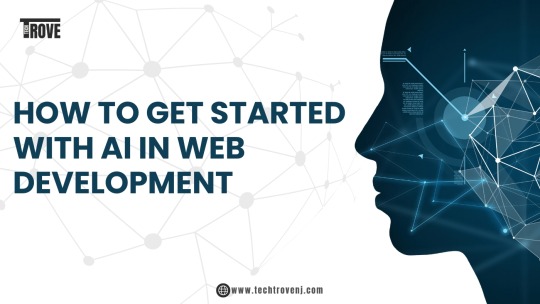
#AIinWebDevelopment#WebDevelopmentTips#MachineLearning#ArtificialIntelligence#CodingWithAI#WebDevProjects#TechTrove#NewJersey#usa
0 notes
Text
Integrating Botpress with Your Tech Stack: APIs, CRMs, and More

Integrating Botpress AI chatbot with your tech stack enables seamless connectivity with APIs, CRMs, and enterprise tools, streamlining automation and enhancing productivity.
0 notes
Text
How to Integrate WhatsApp Chatbot API in Mohali.
In today's fast-paced digital landscape, businesses in Mohali are leveraging technology to improve customer communication and streamline processes. The WhatsApp Chatbot API is one potent tool that is causing a stir. It enables businesses to automate customer interactions, provide instant support, and boost engagement effortlessly. If you're a business in Mohali, here's a step-by-step guide to integrating the WhatsApp Chatbot API into your operations.
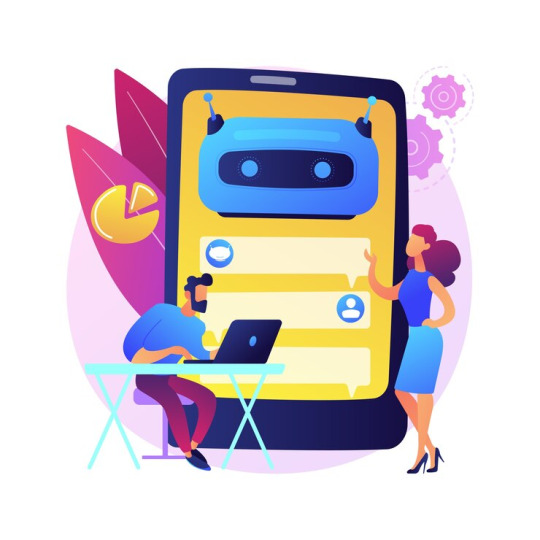
Understand the WhatsApp Chatbot API Businesses can use the WhatsApp Chatbot API to automate consumer communications on WhatsApp. It allows you to build intelligent chatbots that handle queries, send updates, and engage with users around the clock. Its scalability and integration capabilities make it a must-have for businesses of all sizes.
The advantages of using Mohali's WhatsApp Chatbot API 24/7 Customer Support: Automate responses to frequently asked questions. Improved Customer Experience: Provide real-time assistance with personalized messaging. Scalable Solution: Manage thousands of customer interactions simultaneously. Cost Efficiency: Reduce the need for large support teams by automating queries.
Steps to Integrate WhatsApp Chatbot API Step 1: Choose a Trusted Provider To integrate the WhatsApp Chatbot API, partner with a trusted provider such as Twilio, WATI, or Interakt. They make it easier to integrate by providing platforms for accessing the API.
Step 2: Obtain Official API Access To maintain compliance with WhatsApp’s policies, apply for official API access. This involves verifying your business and providing relevant details to your chosen provider.
Step 3: Develop Your Chatbot Work together with developers to create a chatbot that meets your company's requirements. Use a platform like Dialogflow or Botpress to build and integrate the bot seamlessly. Ensure the chatbot can handle FAQs, offer product recommendations, and provide transactional updates.
Step 4: Integrate the API with Your Systems Connect the WhatsApp Chatbot API to your existing CRM, ERP, or customer support tools. This ensures a smooth flow of data and enables your team to manage interactions efficiently.
Step 5: Test and Launch Before going live, thoroughly test the chatbot to ensure it performs as expected. Address any bugs or inconsistencies to ensure a seamless user experience.
Why Mohali Businesses Need the WhatsApp Chatbot API Businesses in Mohali are thriving in a competitive market, making customer experience a key differentiator. By integrating the WhatsApp Chatbot API, companies can maintain a competitive edge, boost customer loyalty, and drive sales. Whether you're in retail, real estate, or IT services, the WhatsApp Chatbot API can transform the way you connect with customers.
Get Started Today! If you're ready to take your customer communication to the next level, start integrating the WhatsApp Chatbot API in Mohali today. With the right tools and a solid strategy, you’ll streamline your operations and delight your customers.
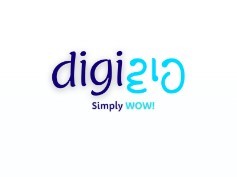
Ready to enhance customer engagement in Mohali? Contact a WhatsApp Chatbot API provider today and transform the way you do business!
#whatsapp chatbot development in mohali#whatsapp chatbot builder Mohali#whatsapp chatbot api Mohali#whatsapp chatbot service provider company Mohali
0 notes
Text
What are Open Source Chatbot Tools for AI Chatbot Development?
Several open-source chatbot tools are available for ai chatbot development, including Botpenguin, Botpress, Rasa, Dialogflow, and ChatterBot. These tools provide various characteristics, like natural language processing, machine learning, and conversation management.
Botpenguin is a popular open-source chatbot tool with a drag-and-drop interface for creating chatbots. It also supports NLP and ML algorithms, making it a good choice for AI-based chatbots.
It is important to consider all the features and capabilities needed for your project and the technical ability necessary to use the tool when selecting an open-source platform for chatbot creation.
0 notes
Text
Real-World Chatbot Development Using Botpress and Dialogflow
Real-World Chatbot Development Using Botpress and Dialogflow Introduction Real-world chatbot development is becoming increasingly important as businesses and organizations seek to automate customer support, improve user engagement, and streamline processes. In this tutorial, we’ll explore how to develop a chatbot using Botpress and Dialogflow, two leading platforms in the chatbot development…
0 notes
Text
Essential Skills Every Chatbot Developer Should Master
Chatbots have become integral to modern businesses, revolutionizing customer service, e-commerce, healthcare, and many other industries. As conversational AI technology continues to advance, the demand for skilled chatbot developers has skyrocketed.

If you're considering a career in chatbot development, it’s essential to build a robust set of skills. Below, we’ll explore the core skills every chatbot developer should master to succeed in this exciting and dynamic field.
Programming Languages and Frameworks
The backbone of any chatbot is the code that drives its behavior. While there are various platforms available to simplify chatbot development, a chatbot developer should still have a solid grasp of key programming languages and frameworks.
Python: Python is the most popular language for developing chatbots due to its simplicity and the vast number of libraries and frameworks available. Libraries like NLTK (Natural Language Toolkit) and spaCy are invaluable for natural language processing (NLP), while Flask and Django can help with building the backend for chatbots.
JavaScript/Node.js: JavaScript is the language of the web, and many chatbot applications are deployed on websites. Node.js allows developers to write server-side code in JavaScript, making it an essential tool for building web-based chatbots.
Java: Java is another widely used language in enterprise chatbot development, especially in systems requiring high scalability. Developers often use Java with frameworks like Spring Boot to develop robust, secure, and scalable chatbot solutions.
Chatbot Frameworks: Platforms like Microsoft Bot Framework, Dialogflow, Rasa, and Botpress provide pre-built components and tools to speed up development. Familiarity with these frameworks is crucial for building efficient, maintainable bots.
Natural Language Processing (NLP)
NLP is the core technology behind chatbots, enabling them to understand and generate human language. Chatbot developers need to understand NLP principles to create intelligent bots capable of understanding context, processing queries, and providing meaningful responses.
Text Preprocessing: Cleaning and structuring text data is essential for chatbot accuracy. Developers must master techniques like tokenization, lemmatization, stemming, and removing stop words to prepare text for analysis.
Intent Recognition: One of the most important tasks in NLP is identifying user intent. Developers need to train chatbots to understand a variety of expressions, meaning the bot can interpret the user’s purpose behind the message. Tools like Dialogflow or Rasa provide intent recognition features, but understanding how these tools work under the hood is critical.
Entity Recognition: Entities are key pieces of information that chatbots must extract from user queries, such as dates, locations, or product names. Mastery of named entity recognition (NER) techniques allows chatbots to extract this information accurately.
Context Management: To build a conversational chatbot that can handle complex conversations, developers must manage context—tracking user inputs and maintaining the flow of the conversation. This can involve implementing memory features or utilizing frameworks that allow for multi-turn conversations.
Machine Learning and Deep Learning
Chatbots that incorporate machine learning (ML) and deep learning (DL) can evolve over time, improving their responses based on user interactions. For more advanced chatbots, developers should have an understanding of ML algorithms and DL models to enhance their bots’ capabilities.
Supervised and Unsupervised Learning: By applying ML techniques, developers can train chatbots to predict user behavior, identify patterns in interactions, and improve the bot’s performance based on the data gathered. Supervised learning techniques like classification (for intent recognition) are especially useful in chatbot development.
Reinforcement Learning: This method can help chatbots improve by learning from interactions. In reinforcement learning, a chatbot gets rewarded or penalized based on its actions, allowing it to fine-tune responses over time.
Deep Neural Networks (DNN): For highly complex tasks like sentiment analysis, text generation, or speech recognition, understanding deep learning models, such as recurrent neural networks (RNNs) and transformers, can be advantageous.
Understanding of Conversational UX/UI Design
Building a chatbot isn’t just about writing code—it’s also about creating an engaging user experience (UX). Developers must understand conversational design principles to ensure that their bots are user-friendly and easy to interact with.
Natural Flow: Chatbots should simulate human-like conversation. This requires an understanding of turn-taking, appropriate response times, and the ability to handle unexpected user inputs.
Personalization: Personalized chatbots that remember user preferences and provide relevant responses can significantly improve user engagement. Developing personalized user experiences requires integrating the chatbot with databases and systems to track user history.
Error Handling: A critical part of UX design is ensuring that the bot gracefully handles errors. If a chatbot doesn’t understand a query or encounters an issue, it should respond in a way that minimizes user frustration, perhaps by offering clarification or suggesting alternative queries.
APIs and Integrations
Chatbots often need to interact with other systems to provide useful responses or perform actions. Whether it’s pulling data from a third-party API, querying a database, or interacting with other platforms like Facebook Messenger or Slack, API integration is an essential skill.
RESTful APIs: Knowledge of how to work with RESTful APIs is essential, as many chatbots will need to retrieve data from external sources or send data to different platforms. For example, a chatbot on a website may need to access inventory data from an e-commerce platform.
OAuth and Security: Understanding authentication protocols like OAuth ensures that your chatbot can securely access external services without exposing sensitive user data.
Cloud Platforms and Hosting
Cloud platforms like AWS, Google Cloud, and Microsoft Azure are often used for hosting chatbots, especially for those that require scalability. Mastery of these platforms is essential to ensure a smooth deployment and maintain the chatbot’s performance.
Serverless Computing: Serverless architectures (e.g., AWS Lambda) can help chatbot developers scale their applications without managing servers, allowing for efficient and cost-effective resource allocation.
Containerization: Knowledge of container technologies like Docker is useful for packaging and deploying chatbot applications across various environments.
Data Privacy and Security
Data privacy is a critical concern, especially with chatbots handling sensitive user information. A chatbot developer must have a thorough understanding of data protection regulations (such as GDPR) and how to ensure that chatbots comply with these rules.
Encryption: Developers should implement encryption techniques to protect user data during interactions and ensure secure communication between the user and the bot.
User Consent: Chatbot developers should ensure their bots request user consent to collect personal information, and they should be transparent about how data is used and stored.
Continuous Testing and Optimization
Testing is a crucial part of the chatbot development process. Developers need to consistently evaluate their chatbots' performance and make necessary improvements. Key areas of focus include:
User Testing: Conducting user tests is essential to understand how the bot is performing in real-world scenarios. This involves monitoring conversations, identifying pain points, and fine-tuning the bot’s responses.
Performance Optimization: As a chatbot scales and interacts with more users, optimizing its performance becomes crucial. This includes improving response times, enhancing accuracy, and ensuring that the system remains stable under heavy traffic.
Analytics: Leveraging chatbot analytics allows developers to monitor user engagement, identify drop-off points, and optimize the chatbot’s flow and effectiveness.
Conclusion
Becoming a proficient chatbot developer requires a diverse skill set that spans programming, machine learning, natural language processing, UX/UI design, and more. By mastering these essential skills, developers can create intelligent, engaging, and secure chatbot development capable of transforming user experiences and driving business success. Whether you’re just starting in the field or are an experienced developer looking to enhance your abilities, continuing to learn and adapt to new technologies will keep you at the forefront of the chatbot revolution.
0 notes
Text
a dialogue management system (DMS) for detecting diseases using symptoms
1. Define Objectives and Scope
Identify Use Cases: Focus on disease detection based on user-reported symptoms.
Medical Domain Requirements: Ensure compliance with medical standards and regulations (e.g., HIPAA).
Target Diseases: Specify the range of diseases the system will handle.
2. Data Collection and Preparation
Medical Data Sources: Collect data from medical records, symptom checkers, and health-related datasets.
Data Annotation: Annotate data with medical entities such as symptoms, diseases, and relevant medical history.
3. Natural Language Understanding (NLU)
Intent Recognition: Train models to recognize intents related to symptom reporting, seeking diagnosis, and requesting advice.
Entity Extraction: Extract medical entities like symptoms, durations, severities, and medical history.
Preprocessing: Implement preprocessing steps tailored to medical terminology.
4. Dialogue State Tracking (DST)
State Representation: Define a state representation that includes reported symptoms, patient history, and current context.
State Update Mechanism: Update the state based on new inputs, maintaining a coherent history of the dialogue.
5. Dialogue Policy
Policy Learning: Develop a policy to guide the conversation towards gathering relevant medical information and providing potential diagnoses.
Medical Knowledge Integration: Incorporate medical guidelines and knowledge bases to inform the policy.
Action Selection: Implement actions to ask follow-up questions, provide preliminary diagnoses, and suggest next steps.
6. Natural Language Generation (NLG)
Template-Based NLG: Create templates for generating medically appropriate and empathetic responses.
Dynamic NLG: Use advanced models to generate responses tailored to the specific medical context.
7. Integration and Deployment
Backend Integration: Integrate with medical databases, electronic health records (EHR), and external APIs for additional information.
User Interface: Develop interfaces like web-based chatbots, mobile apps, or voice assistants for user interaction.
Scalability and Performance: Ensure the system can handle high volumes of queries and provide quick responses.
8. Evaluation and Testing
User Testing: Conduct thorough testing with healthcare professionals and patients to gather feedback and validate accuracy.
Automated Testing: Implement tests to ensure the system’s reliability and safety.
Evaluation Metrics: Track metrics such as diagnostic accuracy, user satisfaction, and system response time.
9. Continuous Improvement
Monitoring and Logging: Continuously monitor the system’s performance and log interactions for analysis.
Iterative Refinement: Regularly update the system based on feedback and new medical knowledge.
A/B Testing: Conduct A/B testing to evaluate the impact of changes and improve the system iteratively.
Example Tools and Frameworks
NLU: spaCy, NLTK, Rasa NLU, BioBERT
DST: Rasa, Tracker (from Microsoft Bot Framework)
Dialogue Policy: Rasa, Reinforcement Learning libraries, medical guidelines integration
NLG: Templating libraries, GPT-3, Transformer-based models
Integration: Flask, Django, Node.js, FHIR (Fast Healthcare Interoperability Resources)
User Interface: Botpress, Microsoft Bot Framework, Google Dialogflow
Pipeline Diagram
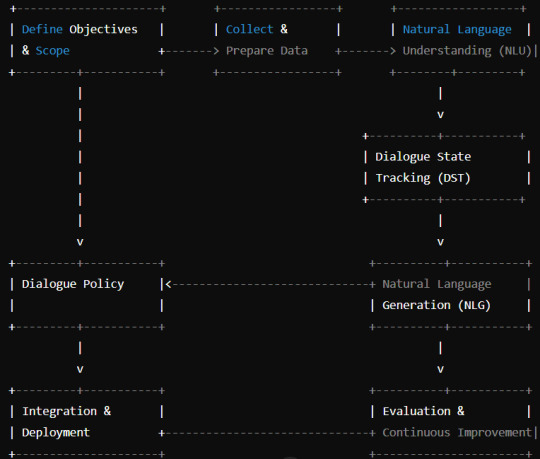
This specialized pipeline for a DMS in disease detection ensures a robust and medically sound approach to developing a tool that can assist in preliminary diagnosis based on symptoms.
0 notes
Text
How to Implement an Auto Chatbot with Product Suggestions for Your Website

In the successful world of e-commerce, connecting visitors and providing unique shopping experiences are crucial. An effective way to achieve this is by integrating an auto-chatbot that not only interacts with customers but also provides tailored product suggestions. This blog will guide you through the steps to implement chatbot app development that can improve the user experience and maybe boost your sales.
Why You Need an Auto Chatbot with Product Suggestions
Before we dive into the technical details, let’s understand why an auto chatbot is a valuable addition to your website:
24/7 Availability: Chatbots can assist customers at any time of the day, ensuring your store is always open for business.
Personalized Experience: By analyzing user data, chatbots can recommend products that are likely to interest each visitor.
Increased Engagement: Chatbots can initiate discussions and keep visitors engaged, reducing bounce rates.
Efficiency: They handle multiple customer interactions together, providing quick responses and improving user satisfaction.
Step-by-Step Guide to Implementing Your Chatbot
1. Define Your Goals and Use Cases
Start by defining what you want to achieve with your chatbot. Are you looking to provide customer support, guide users through the shopping process, or promote products? Clearly stating your goals will shape the functionality of your chatbot.
2. Choose the Right Platform
There are several chatbot platforms available, each with its own set of features. Some popular options include:
Dialogflow: Google’s chatbot building platform, ideal for those who want to leverage Google’s machine learning capabilities.
Botpress: is an open-source platform that offers extensive customization.
ManyChat: is focused on integrating with social media platforms like Facebook. Choose a platform that connects with your technical expertise and the specific needs of your website.
3. Design Your Chatbot’s Flow
Map out the discussion moves, including regards, FAQs, and product suggestion logic. A well-designed flow ensures a smooth user experience. Here are some key components to consider:
Welcome Message: Greet users warmly and introduce your chatbot’s capabilities.
User Queries: Define how the bot will handle common questions and requests.
Product Recommendations: Decide how the bot will present product suggestions based on user inputs or browsing behavior.
4. Integrate Product Recommendation Logic
To suggest products effectively, your chatbot needs access to your product database. Here’s a basic approach:
Collect User Data: collect information like browsing history, previous purchases, and preferences.
Analyze behavior: Use this data to identify patterns and predict user interests.
Suggest Products: Implement methods that match user data with relevant products. For example, if a user often browses electronics, your chatbot app service can suggest the latest devices and deals in that category.
5. Build and Train Your Chatbot
Using your chosen platform, start building your chatbot. Train it to understand user inputs and respond effectively. For example:
Intent Recognition: Teach your bot to recognize different user intents, like “I need a new laptop” or “Show me discounts.”
Entity Extraction: Enable it to identify and extract specific information, such as product names or price ranges.
6. Test and Optimize
Before going live, actually test your chatbot to ensure it functions correctly. Test it with various scenarios to check for bugs and areas for improvement. Gather feedback and make the necessary adjustments.
7. Launch and Monitor
Once you’re satisfied with the testing phase, launch your chatbot on your website. Monitor its performance using analytics tools to track user engagement, satisfaction, and conversion rates. Regularly update and refine your chatbot to keep it effective and relevant.
Best Practices for a Successful Chatbot Implementation
Keep It Simple: Don’t control users with too many options. Keep interactions easy to navigate.
Provide Value: Ensure your chatbot adds value by offering useful information and personalized suggestions.
Continuously Improve: Use user feedback and data analytics to improve your chatbot’s performance.
Conclusion XcelTec, a leading chatbot app development company. Implementing an auto-chatbot with product suggestions can mostly improve your website’s user experience and increase sales. By following these steps, you can create a chatbot that not only engages visitors but also helps them find the products they desire. Start today and watch your e-commerce site succeed!
#Chatbot App Development Company#ChatBot#Chatbot App Development Services#ChatBot APP#Implement ChatBot
0 notes